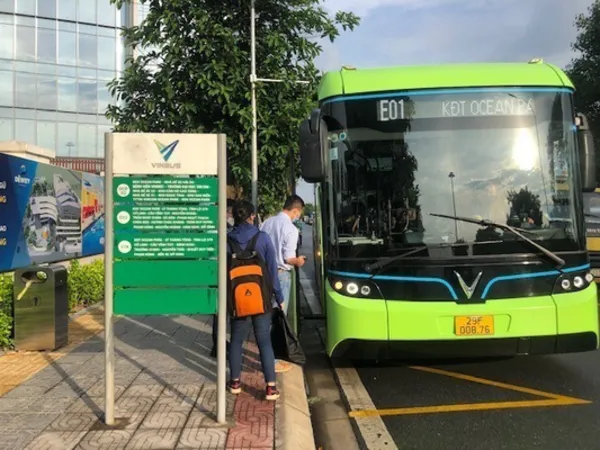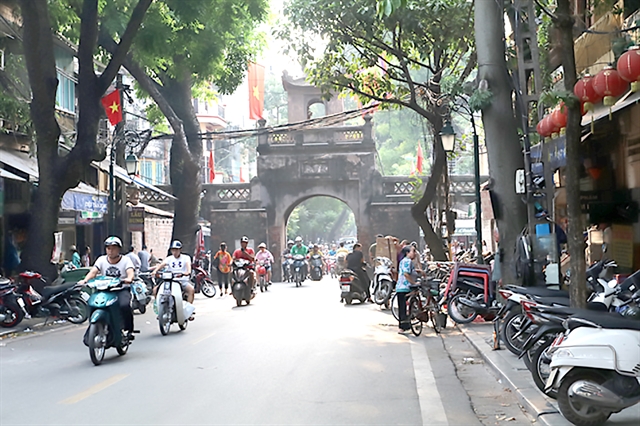 Society
Society

 |
| Ô Quan Chưởng, one of Hà Nội’s old city gates, in Hàng Đào Ward in the capital city’s old quarter. The area has narrow streets and is often crowded with vehicles. VNA/VNS Photo |
HÀ NỘI — Voters from Hàng Đào Ward have suggested to city authorities that smaller buses be allowed in the old quarters to reduce congestion.
At the meeting with voters in Hoàn Kiếm District in preparation for the 17th session of the Hà Nội People's Council held recently, a proposal was also made to allocate land outside the Hồng (Red) River dyke or space outside the urban area, for parking.
In response, leaders from Hoàn Kiếm District said that they had proposed to the city that cars be restricted from the old quarter and large buses too be banned from the main radial axis.
The area suffers from traffic jams, particularly on the weekends, so the district has been researching possible traffic solutions for the area.
In the immediate future, local authorities will deploy static traffic arrangements in underground areas such as the Opera House flower garden and the May 1 Square and look at using minibuses, rather than full-sized buses. Hà Nội currently has 154 bus routes in operation, according to the city’s statistics and as many as 11 transport units operate bus routes with more than 2,300 vehicles, transporting tens of thousands of passengers every day.
Last year, the Hà Nội Transport Corporation reviewed and proposed the municipal Department of Transport to adjust the work of eight bus routes to make travel easier and enhance bus connections. The spread of bus services has been expanded, however there is still no bus system in the old quarter.
Nguyễn Hoàng Hải, Deputy Chairman of the Hà Nội Public Transport Association, said that bringing minibuses into the old quarters did not depend on the people’s wishes, but on the infrastructure.
“Buses in Hà Nội come in many sizes, from small to large. If the infrastructure is suitable, putting buses into use would be very good. But I think that bringing buses in is not just about driving, but also about organising traffic, ensuring security, order and safety," said Hải.
With the current traffic situation in the old quarters, Hải acknowledged that it would "not be easy to deploy" buses and authorities would need to make any changes step by step and trial systems which would then be reviewed.
Việt Nam's traffic problem, in particular that in Hà Nội, Hải believes, must be handled in a synchronised way.
The management agency would have to consider what types of vehicles to choose, what route to take and where to arrange stops so as not to obstruct traffic and not affect the lives of people in the old quarters.
“The management agency will have to answer many questions from engineers, traffic organisation and work management teams. I think that if Hà Nội surveys carefully and carries out gradually, we can let minibuses run in several sections. In fact, at present some minibuses are running on some inner city streets," he said.
Emphasising that this type of public transport would not take customers from taxi companies, Hải stated that each type of vehicle would serve its own group of passengers.
Taxis serve passengers who need door-to-door pickups over short or medium distances, buses will serve passengers on longer trips, following a fixed route. — VNS




